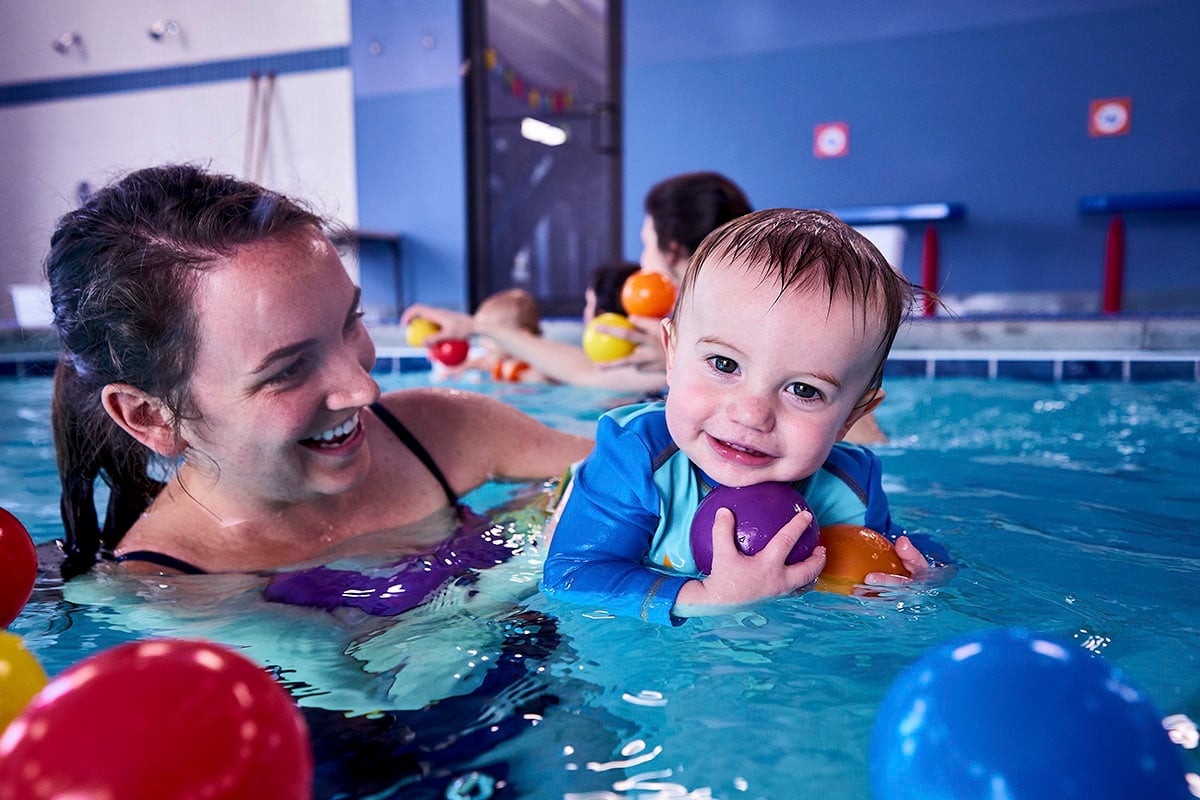
At Swimtastic, our goal is to teach swimming through a positive, safe and loving environment. We recognize that each swimmer has different emotional and developmental abilities and we cater lessons to each individual's needs.
Parents and first time learners often have questions about lessons and swimming in an indoor pool versus an outdoor pool. We're therefore addressing the differences and adding in some tips to help along the way. If you have questions on making your lesson more comfortable, water temperature or what a 'rash guard' is, then read on!
Here are some tips on swimming in an indoor pool:
Our pools (LA Fitness or Swimtastic built, dedicated pools) are heated, varying between 80-90 degrees. On average, our LA Fitness Pools have thermometer readings at 85 degrees and the Swimtastic Staff is trained to take water temperatures daily. Like a public pool facility, there are standards that the pool temps must meet for optimal operation. For example, pools under 70 degrees are deemed too cold and can cause muscles to shut down if a person is not swimming. In the opposite scenario, a pool over 92 degrees is too hot for swimming or lap training. Our heated pool temperatures are just right for an optimal swim lesson environment.

Swimming indoors is different than swimming outdoors considering the air temperature does play a role in the swim environment. On a warm, sunny day, you receive the benefit of sunshine and warmer air temps from swimming outdoors. Indoors, the cooling system (especially in summer) can make the air temps cooler. For example, if you get your head wet in warm water then pull your head out of the water into the air-conditioned air, you will feel chilly even though the water temperature is warm. Considering this and the fact that people lose body heat through their heads, we suggest wearing a swimming cap. It is just like wearing a hat, but for the water!
So, what is a shivering swimmer to do?
Here are a few tips for swimmers and their families to minimize the “cold” feeling during and after swim lessons:
1. What you should wear in the pool? As mentioned above, a swim cap will keep heat in by keeping the swimmer's hair dry. In addition to a swim cap, students can wear a tight-fitting rash guard. A rash guard is similar to the concept of a wet suit without being so thick and restrictive. Rash guards are water/swim shirts that come in long and short sleeve and have different thickness options. The key to a rash guard is a snug fit. Anything too big or loose will weigh the swimmer down, hinder swimming and won't do much to keep the swimmer warm. Of course, a dry towel or swim robe is the perfect way to end a swim lesson.

2. Stay in the water! During your swimmer’s lesson have them stay fully submerged in the water as much as possible (meaning just their head is out of the water). Kiddos that pull themselves in and out of the water, sit on the stairs or sit out on the pool edge are causing their body temperature to fluctuate. While going in and out of the water will not harm the swimmer, it can make them uncomfortable.

3. What to do after a swim lesson? Rinse off in the showers on deck. Not only is this a good habit for rinsing the chlorine off after a swim, but it will also help a swimmer warm up and assist with transitioning from the in-water to out-of-water environment. Make sure the shower water is warm, but not burning hot. Then thoroughly dry the swimmer off before leaving the pool deck. If possible, change the swimmer into dry clothes before leaving. We have changing tents on deck for the student’s privacy.
4. How is the swimmer feeling? Evaluate your swimmer's health prior to lessons. If they are feeling under-the-weather or exhibiting sick symptoms, please let your instructor know. If your child is feeling “off” or “sick” prior to a swim lesson, please consider asking for a make-up lesson. Swimming is an aerobic exercise so if they aren’t feeling 100%, their performance will be affected and they probably won’t enjoy the lesson.
At Swimtastic Swim Schools, we want everyone to have an enjoyable swim lesson in our pools. That is why we strive to make our pools the best in the swim lesson business. If you ever have any questions or concerns about the pool, please contact the deck supervisor.





